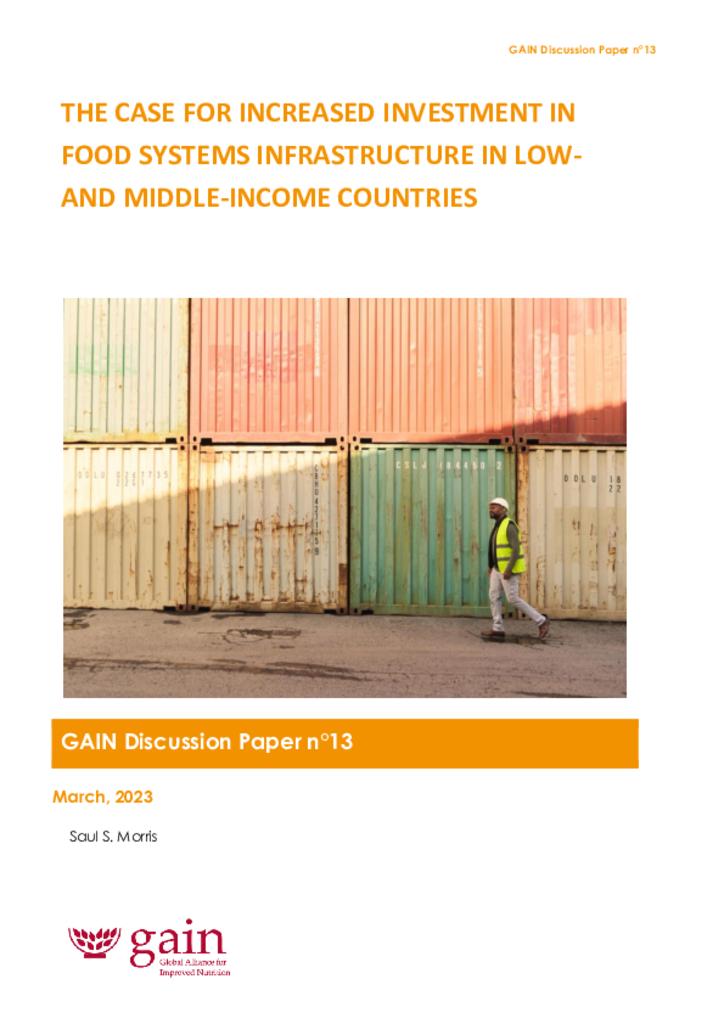This paper discusses the critical importance of expanding 'food systems infrastructure' as a necessary pre-condition for improving access to healthy and sustainable diets in low- and middle-income countries. It proposes a tractable definition of food systems infrastructure, highlights deficits that have yet to be addressed, and lays out a generic way forward to accelerate infrastructure accumulation.
Illustrations of infrastructure needs are provided for three categories of healthy food: fruits and vegetables, animal-source foods, and grains and pulses. In each case, production, distribution, and sales could all be expanded and facilitated if greater investments were made in developing the relevant infrastructure. This is likely to include both elements of infrastructure that are not specific to food, such as roads and digital infrastructure, as well as elements that are specific to food, such as refrigerated warehouses, markets, and on-farm irrigation. The absolute magnitude of the current infrastructure gaps is shown to be very large, especially in Africa south of the Sahara.
Costs of developing this infrastructure are correspondingly substantial.
Efforts to transform food systems must consider infrastructure needs. Ideally, efforts to plan Food Systems Transformation Pathways should commission food systems infrastructure audits and prioritise the most important investments. Development finance institutions have a key role to play in mobilising the needed finance, as do stock exchanges in countries where these are operational.
